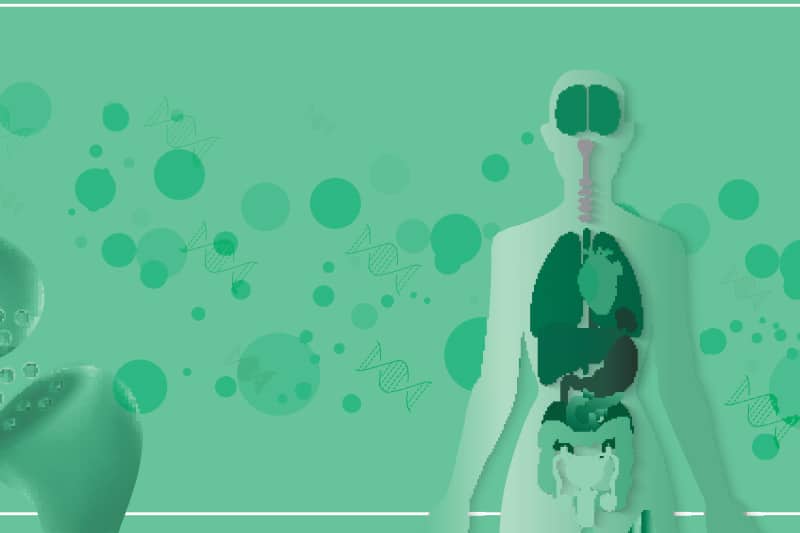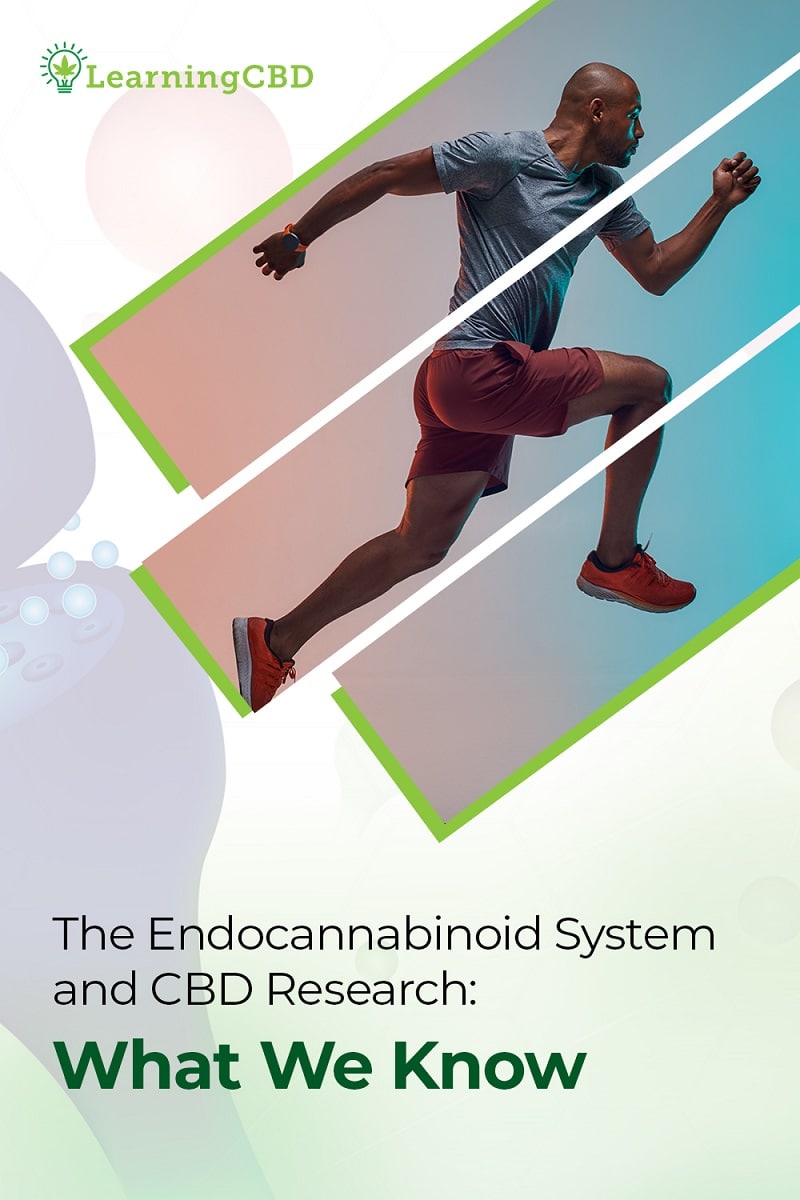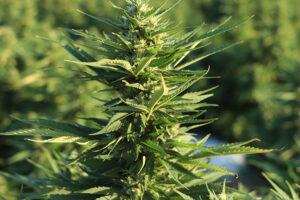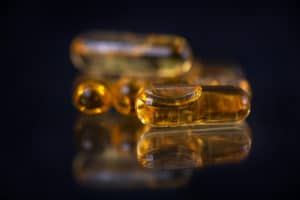The Endocannabinoid System and CBD research doesn’t get a lot of publicity. Maybe it is the multisyllabic name or the fact that researchers know relatively little about how its functions.
The endocannabinoid system is a biological system inside all humans. It plays a central role in processing and interacting with CBD, which results in many of the compounds’ health benefits.
Our guide below is everything we know about the influence and importance of the endocannabinoid system, and its mediation effects on CBD.
What Is the Endocannabinoid System?
The endocannabinoid system contains neurotransmitters that send signals between cells in the body. Researchers discovered the system in the early 1990s, though many of the mechanisms behind the actions remain a mystery in modern medicine. Today, researchers are certain that the system influences cognitive processing, mood, appetite, pregnancy, and memory.
Our article is going to focus on how the endocannabinoid system and CBD cooperate within the body. While CBD can influence non-cannabinoid areas of the body, the endocannabinoid system is the most significant factor. The interaction with CBD utilizes three primary components: endocannabinoids, endocannabinoid receptors, and enzymes.
Endocannabinoids
Endocannabinoids, also known as endogenous cannabinoids, are molecules that resemble cannabinoids. The difference is that the body produces these molecules, whereas cannabis plants create cannabinoids. The prefix “endo” means “within,” which, in this case, refers to the human body.
Researchers are aware of two types of endocannabinoids: anandamide (AEA) and 2-arachidonoylglyerol (2-AG).
AEA is a fatty acid neurotransmitter that comes from the body’s breakdown of an essential Omega-6 fatty acid, called arachidonic acid. The first documentation of AEA was in 1992, and scientists believe it can have therapeutic effects in the central or peripheral nervous systems.
2-AG also comes from arachidonic acid, as well as glycerol. It is predominantly present in the central system, though researchers have found it in animal and human milk, too. The combination of AEA and 2-AG ensure that internal bodily functions run smoothly.
Endocannabinoid Receptors
Endocannabinoid receptors are everywhere in the body, though mostly the brain. These components are responsible for a range of physiological processes, such as pain, mood, memory, and appetite. It operates like antennae on the surface of a cell that oversees conditions—if there is a change in circumstances, the receptors will initiate the appropriate response.
Researchers classify endocannabinoid receptors into two primary classifications: CB1 and CB2. CB1 receptors are abundant, especially in the central nervous system. It is the receptor that interacts with the THC in marijuana that induces “high.”
The expression of the CB2 receptor is primarily through the immune system; specifically, the peripheral nervous system. CB2 receptors are in the brain, but evidence suggests its primary function is to regulate cytokine release, which ensures a healthy defense system. Endocannabinoids interact with either of these receptors, though the effect varies based on location and quantity.
For instance, endocannabinoids that interact with CB2 receptors will likely benefit the immune system. When it forms a bond, it may reduce inflammation or swelling. That same endocannabinoid may target a CB1 receptor in the lower back cells and reduce pain there.
Enzymes
The last component of the triad is the enzyme. It is responsible for breaking down and disposing of endocannabinoids after use. The two most impactful enzymes are fatty acid amide hydrolase (FAAH) and monoacylglycerol acid lipase (MAGL).
In simple terms, FAAH breaks down AEA, and MAGL breaks down 2-AG. The relationship is one of the defining characteristics that makes endocannabinoids unique from other molecules. For example, where the body would pack and store hormones for later use.
The endocannabinoid system requires the three components to work together to maintain homeostasis (equilibrium). It only engages whenever and wherever the body needs it.
One example of where this type of action appears is when someone consumes CBD.
How CBD Interacts with the Endocannabinoid System
CBD is short for cannabidiol. It is one of 113 currently known cannabinoids in cannabis plants. The non-psychoactive compound is capable of influencing people’s mood, appetite, anxiety levels, and pain after consumptions.
People consume CBD in the following forms:
When CBD enters the system, it activates the endocannabinoid system in the brain, nervous systems, muscles, and immune cells. THC operates similarly, but its activation potential within the endocannabinoid system is significantly stronger.
It is worth noting that the consequences of the mechanism between CBD and the endocannabinoid are not completely clear. Researchers believe that instead of directly binding with the receptors, the CBD will stimulate it by proxy. It is clear, though, that this interaction is responsible for myriad positive psychological and physiological effects.
How CBD Reacts with Specific Receptors
For instance, the conjunction of the CB1 receptor and CBD inhibits the release of glutamate. CBD influences the ability of the receptor to inhibit normal brain functions, and the interaction is also responsible for the treatment of epilepsy with CBD.
The U.S. Food & Drug Administration (FDA) approved the use of an oral cannabidiol solution, called Epidiolex, on June 25, 2018. The drug is a treatment for seizures that come from epilepsy, including Lennox-Gastaut syndrome and Dravet syndrome. The approval marked the first-ever FDA-approved medication for the seizures related to Dravet syndrome.
CBD also targets the transient receptor potential (TRP) channels. These ion channels exist on the surface of the cell membrane and mediate sensations, such as pain, pressure, temperature, and taste. CBD influences the level of calcium these channels permit.
Cannabinoids also have anti-aging potential as CBD protects the brain from unwanted oxidative stress. The compound increases the amount of adenosine the body creates, which has anti-inflammatory properties. Adenosine targets toxic oxygen metabolites that would otherwise cause swelling.
Another potential benefit is that CBD increases the signals from the 5HT-1A serotonin receptors. Serotonin is a chemical that nerve cells produce, which regulates moods. When there is an imbalance of serotonin, people experience depression or mood disorders, for example. If CBD is present in the body, the receptors release more of the chemical, which can decrease anxiety and work to elevate the mood.
Experts have also found that CBD has antihyperalgesic effects, which means that it can reduce sensitivity to pain. CBD targets the TRPV1 receptors and desensitizes these receptors to pain signals.
The same outcome is not possible when the compound influences the CB1 or CB2 receptors, though. CBD does induce more reactions from TRPV1 receptors, which includes, but is not limited to:
- A potential treatment for neuronal hyperexcitability
- Serving as an anti-epileptic
- Moderating the pain from rheumatoid arthritis
There are many different types of receptors in the body, including outside of the endocannabinoid system. For instance, the activity associated with the 5HT-1A receptor falls outside of the system. The same applies when CBD inhibits adenosine uptake, activates glycine receptors, or blocks orphan G-protein coupled receptors, called GPR55.
History of CBD Research
The CBD industry is far ahead of the research. Many companies make claims about the efficacy of CBD without having scientific evidence to back up the statements. The Food and Drug Administration also does not regulate the ingredients or purity, so consumers may find themselves heading into a ‘grey area’ when purchasing CBD products in general.
While there is evidence of people using CBD as far back as 2000 BC, the modern history of CBD research dates back to 1940. Chemist Roger Adams extracted the compound while working at the University of Illinois. At the time, Adams was unaware of his discovery, and it was until decades later that researchers determined CBD’s detailed structure.
Walter S. Loewe conducted the first scientific tests of CBD in 1946. His experiments on animals showed that CBD did not have any psychoactive effect. The same year, Raphael Mechoulam determined it had a three-dimensional structure.
Mechoulam remains one of the most influential people in the cannabis field. He is known for identifying 2-AG and AEA, in addition to researching the structure, synthesis, and isolation of tetrahydrocannabinol. Many people credit Mechoulam as being the founder of the CBD industry because of this discovery.
The most significant medical breakthrough related to CBD was Mechoulam’s work around connecting the compound to the treatment for epilepsy. While there had been evidence of CBD as an anti-epileptic working on animals, no human trials were performed until the 1980s. The initial trials showed an inverse relationship between the frequency and severity of seizures and the dosage of CBD.
While the publication of these findings served as a breakthrough, the result did not lead to more extensive trials. Only three decades later did the connection between cannabidiol and Lennox-Gastaut syndrome and Dravet syndrome become clear.
The collective epiphany is what lead to the CBD treatment, Epidiolex.
Key Takeaways from Research on CBD
Many claims surround CBD, beyond its treatment for epilepsy. Producers have advertised it as a cure for everything from arthritis to menstrual cramps, cancer, and insomnia. Some of these claims are true, where others are gross overstatements.
Here are the most substantial results that researchers have found related to CBD:
Pain Relief
There is evidence of CBD treating pain as early as 2900 BC. It is mainly due to how CBD influences the endocannabinoid system; specifically, its regulation of neurotransmitter signals. Medical practitioners have used it throughout history to treat inflammation and chronic pain.
There is no limit to where CBD can assuage pain in the body. Studies show the compound is a useful tool when treating multiple sclerosis and rheumatoid arthritis, among other ailments. People can find treatments in many forms, including oral sprays, like Sativex, and topical lotions or oils that users apply directly to the afflicted area.
Minimize Depression and Anxiety
Depression is staggeringly common. According to the World Health Organization, more than 264 million people of all ages suffer from the affliction. The ubiquity also makes depression the leading cause of disability around the world.
The problem is that 76 to 85 percent of people do not have the resources to treat moderate or severe depression. CBD provides a treatment for depression and anxiety that does not come with many of the same side effects of traditional pharmaceuticals.
Researchers have found significant evidence of antidepressant capacities in humans and animals. One study had 57 men in Brazil try different dosages against a placebo. The researchers concluded that 300 milligrams of CBD was the most effective treatment against public speaking anxiety.
Improved Skin
While many of the CBD-related benefits revolve around antioxidants and anti-inflammatories, there is a burgeoning cottage industry around the compound’s treatment for the skin. Researchers believe CBD improves skin quality because of its hydrating and emollient properties. It can also reduce the presence of acne or eczema.
Skincare routines can benefit from the addition of CBD to moisturizers, creams, or other topical treatments. People can also infuse the pure oil into sea-salt soaks or mix it into soaps. CBD’s culinary connoisseurs may even win the approval of their dermatologists if they blend CBD oil into their foods, such as smoothies, peanut butter, dressings, or oatmeal.
The Bottom Line
CBD research has come a long way, especially in the past three decades. The scientific community’s investment in cannabidiol has provided various degrees of relief from epilepsy, pain, inflammation, PTSD, and more. Still, there is a lot the medical community is yet to uncover about CBD.
For instance, no one knows the most effective dose of CBD when it comes to medicinal applications. Researchers have yet to parse out whether there are other potential benefits, though. The lack of clarity is most evident in the fact that people do not know the complete mechanisms behind CBD’s interaction with CB1 and CB2 receptors in the endocannabinoid system.
The research is bound to catch up with the CBD industry, but the current environment allows manufacturers and retailers to make exaggerated claims about its benefits. The increasing popularity of CBD may merit more government regulation in the future, though that implementation is still in the discussion stages.
For now, consumers should shop responsibly and consult their primary care physician about the potential effects of CBD.
FAQs About The Endocannabinoid System and CBD Research
Question: What is the endocannabinoid system?
Answer: The endocannabinoid system is a biological system inside all humans. It plays a central role in processing and interacting with CBD, which results in many of the compounds’ health benefits.
Question: What are endocannabinoids?
Answer: Endocannabinoids, also known as endogenous cannabinoids, are molecules that resemble cannabinoids. The difference is that the body produces these molecules, whereas cannabis plants create cannabinoids.
Question: What are endocannabinoid receptors?
Answer: Endocannabinoid receptors are everywhere in the body, though mostly the brain. These components are responsible for a range of physiological processes, such as pain, mood, memory, and appetite.
Question: How CBD interacts with the Endocannabinoid system?
Answer: When CBD enters the system, it activates the endocannabinoid system in the brain, nervous systems, muscles, and immune cells.
Question: What are the ways to consume CBD?
Answer: CBD can be consumed in many ways such as smoking, vapes, topicals, oils, and pills.
Question: Can you use CBD products as an anti-aging agent?
Answer: Cannabinoids also have anti-aging potential as CBD protects the brain from unwanted oxidative stress.
Question: When was the first research of CBD conducted?
Answer: While there is evidence of people using CBD as far back as 2000 BC, the modern history of CBD research dates back to 1940. Chemist Roger Adams extracted the compound while working at the University of Illinois.
Question: Are there benefits you can gain from CBD based on research?
Answer: Some of the studies found that CBD products can help in pain relief, depression and anxiety, and improve skin quality.







